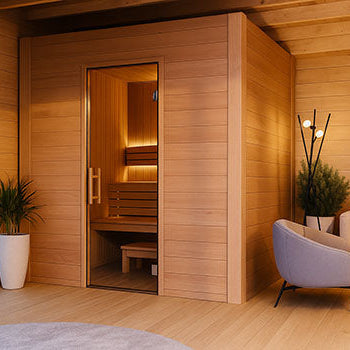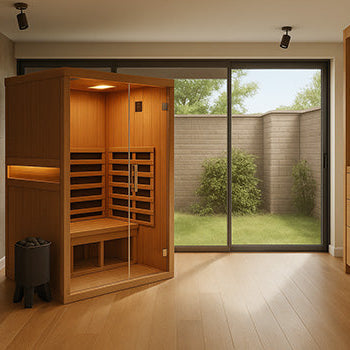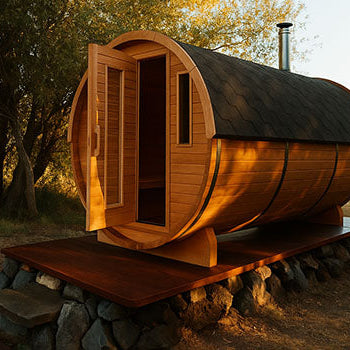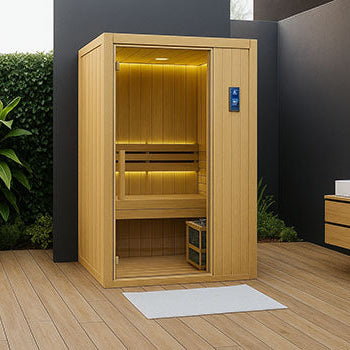Short answer? Finland—those chilly geniuses gave us the sauna. But they weren’t the only ones steaming up history! Across the globe, people have long been crafting ways to sweat it out, from indoor wellness rooms to outdoor heat huts tucked in nature. The obsession with heat, health, and a good detox run deep. Stick around—because the sauna’s story is much hotter than you’d expect.

Tracing the Roots: Where Did Saunas Originate?
Saunas didn’t begin in one place or time like a neat little invention. They slowly evolved across continents, as different cultures stumbled upon the soothing power of steam and heat. That said, Finland proudly claims the title of sauna capital, and it’s easy to see why. Their version is the one we know today—wood, rocks, heat, and that delicious exhale of relaxation.
Still, the love for heat runs deeper than Finnish snowdrifts. Ancient humans across the world were steaming long before anyone said "löyly."
Defining "Sauna": More Than Just a Hot Room
If you think a sauna is just a wooden box with heat, you’re only getting half the story.
In many cultures, the sauna was a place of healing, cleansing, even childbirth. It wasn’t just about getting clean—it was a ritual. People gathered in these heated spaces to recover from illness, connect with nature, and even prepare food. Some even believed steam helped release bad spirits.
So yes, it’s hot in there—but also deeply meaningful.
Ancient Precursors: Early Sweat Bathing Practices
Before spas and backyard retreats, there were caves, pits, and fire-warmed rocks. Long before electricity, humans were finding creative ways to heat up their spaces and their bodies.
Archaeological discoveries have unearthed steam-based wellness practices as early as 10,000 BCE. Think natural hot springs, smoke-filled caves, and carefully placed stones that turned shelters into primitive saunas.
They weren’t luxury—more like survival meets spirituality. But the results? Just as powerful as any five-star spa.
Finland: The Birthplace of the Modern Sauna

If you’ve ever sat in a proper sauna and thought, “This is heaven,” you’ve got Finland to thank.
With around 3.2 million saunas in a population of 5.5 million, Finland doesn’t just love saunas—they live them. From city apartments to lakeside cabins, a sauna is a must-have, not a luxury. Families grow up with them. Friends bond over them. Business deals? Yep, they sometimes happen over a good steam.
It’s not just a habit. It’s heritage.
Archaeological Evidence in Finland and Surrounding Regions
The earliest Finnish saunas weren’t glamorous—they were dug into the earth like bunkers, lined with stones, and heated by fire. These "maasaunas" (earth saunas) were used for more than just bathing.
They were places where people gave birth, treated illness, and braved the cold with a little help from steam. Ash marks and burnt stones found in archaeological digs back up these traditions, proving Finns have been sweating it out for thousands of years.
The Meaning and Origin of the Word "Sauna"
The word “sauna” is Finnish—and it’s one of the few Finnish words that’s travelled the world with its meaning unchanged. Pretty cool, right?
In its earliest use, it described a steam bathhouse built into the ground. The word’s stuck around because nobody does saunas quite like the Finns, and the rest of us have just caught up.
Evolution of the Finnish Sauna (Maasauna, Savusauna, Modern Types)
-
Maasauna: The OG. Dug into the earth and heated with stones. Smoke, heat, and healing.
-
Savusauna: “Smoke sauna” where a fire heats stones for hours, and smoke fills the room before being vented out. The heat? Soft, slow, and beloved by sauna purists.
-
Modern Sauna: Electric, infrared, and even mobile versions. These days, you can find a sauna in a hotel, gym, garden shed, or even a camper van.
Comparing Sauna Origins to Similar Traditions
Finland gets the credit for the modern sauna, but they weren’t alone. Cultures across the world discovered the power of a good sweat in their own ways.
Let’s take a look at a few of sauna’s global cousins.
Native American Sweat Lodges
In North America, many Indigenous tribes have used sweat lodges for generations.
These dome-like structures are spiritual spaces, used for rituals, healing, and purification. Stones are heated in a fire, brought into the centre, and doused with water to create steam. But it’s not just physical—each ceremony is a journey, guided by elders and rooted in connection to the earth.
Russian Banya
The Russian banya is part sauna, part social club.
Inside, bathers sit in a steamy wooden room and get gently (or not-so-gently) whisked with birch branches called venik. It’s believed to boost circulation, flush out toxins, and toughen your spirit.
Most Russians will tell you: you haven’t really bathed until you’ve banya’d.
Turkish Hammam (Different Principle – Steam)
A Turkish hammam is like the Middle Eastern cousin of the sauna—but it leans more into steam than dry heat.
Inspired by Roman bathhouses, hammams are grand, steamy marble rooms where people come to relax, exfoliate, and socialise. Instead of just sitting and sweating, you’re washed, scrubbed, and steamed into a blissful state of calm.
It’s less “campfire cabin,” more “luxury palace.”
Conclusion: Finland as the Cradle of Modern Sauna Culture

So, where did saunas originate? All signs (and sweat drops) point to Finland.
Sure, other cultures built their own versions—each beautiful in its own way. But it’s the Finnish sauna that shaped what we know and love today, from steamy wooden cabins to minimalist electric boxes in posh wellness centres.
Yet, the heartbeat is the same. A warm space. A quiet pause. A tradition that stretches from our ancestors to us.
Whether you’re sitting in a rustic outdoor sauna or a sleek infrared indoor model, you’re part of an ancient story—one that proves humans have always known that heat heals, connects, and calms.









